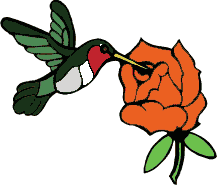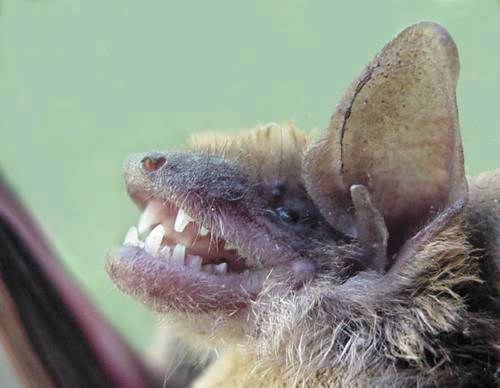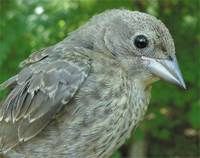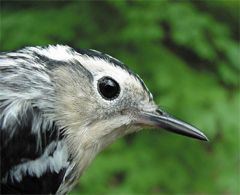 HOME: www.hiltonpond.org |
|
||
|
|
|||
|
|
|||
|
|
|||
|
|
|||
|
|
|||
|
THIS WEEK at HILTON POND |
 DON'T MISS DON'T MISS"HUMMINGBIRD MORNINGS" |
 HOME: www.hiltonpond.org |
|
||
|
|
|||
|
|
|||
|
|
|||
|
|
|||
|
|
|||
|
THIS WEEK at HILTON POND |
 DON'T MISS DON'T MISS"HUMMINGBIRD MORNINGS" |
|
We don't actually have a belfry at Hilton Pond Center, but like most Piedmont locations near water, we do have bats. Almost every evening from late March through November, ghostly dark shapes begin swooping overhead as the sun goes down, undoubtedly picking off aerial insects that may have emerged from the warm waters of the pond. Occasionally, a bat will become entangled in a mist net we use to capture birds, but such bats don't usually stay snared for long; they just chew their way out, leaving a small round hole in the net as a calling card.  One day this week, we were a bit startled when we walked through the old farmhouse and spied a bat flopping helplessly on the slick vinyl floor of the office. This scenario was surprising in the first place because it was midday, and second because we weren't really sure how it got into the office. All we can figure is it came down a chimney and squeezed through a narrow crack--something at which bats are very adept--eventually finding its way to the office. Since all bats are capable of carrying rabies, we carefully captured the bat in a towel and handled it gently while wearing gloves. Some experienced batmen and batwomen hand-tame their bats and scoff at danger from disease; nonetheless, we've always thought that foaming at the mouth would be an unpleasant way to leave this earth and prefer a more cautious approach. Not being bat experts, we spent a great deal of time poring over our available mammal guides--most of which proved to be weak at offering useful tools for identifying bats. The best information we got indicated the bat in question is a Big Brown Bat (Eptesicus fuscus), an uncommon species throughout the Piedmont. Big Brown Bats aren't all that large, with bodies 4" to 5" long and wingspans of perhaps 14", but they are bigger than most other local bat species. Big Brown Bats frequent human dwellings, roosting colonially in attics and behind shutters, but also "hang out" in hollow trees. True hibernators, they seek caves, abandoned mines, and old buildings in which to overwinter.
We could rattle on a bit longer about Big Brown Bats, but some other bat specialist may argue that the individual illustrated above is actually another species. We're striving for accuracy here at Hilton Pond Center, so please do help us out on any problems we have with bat identification. We'll be happy to post whatever corrections might need to be made. If you enjoy "This Week at Hilton Pond," please help Support Hilton Pond Center for Piedmont Natural History |
 (Young birds resemble females, but have lightly streaked breasts) The following species were banded this week (15-21 June): Blue-gray Gnatcatcher--2* * = At least one Recent Fledgling  (Males have a black mask surrounding eyes) |
WEEKLY BANDING TOTAL YEARLY BANDING TOTAL (2001) 63 species 671 individuals BANDING GRAND TOTAL (since 28 June 1982) 122 species 38,954 individuals  (This large flycatcher typically bobs its tail when perched)
NOTABLE RECAPTURES WITH ORIGINAL BANDING DATES: American Goldfinch (2) 02/07/97 12/05/98 Red-eyed Vireo (1) 05/16/00 Northern Cardinal (2) 04/20/97 05/30/98 Carolina Wren (2) 06/28/98 09/06/00 House Finch (2) 07/29/00 08/18/00 Eastern (Rufous-sided) Towhee (1) 07/10/00 |
|
Up to Top of Page Current Weather Conditions at Hilton Pond Center |
 post questions for The Piedmont Naturalist |
 Nature Study Network |
Hilton Pond Center |
|
|